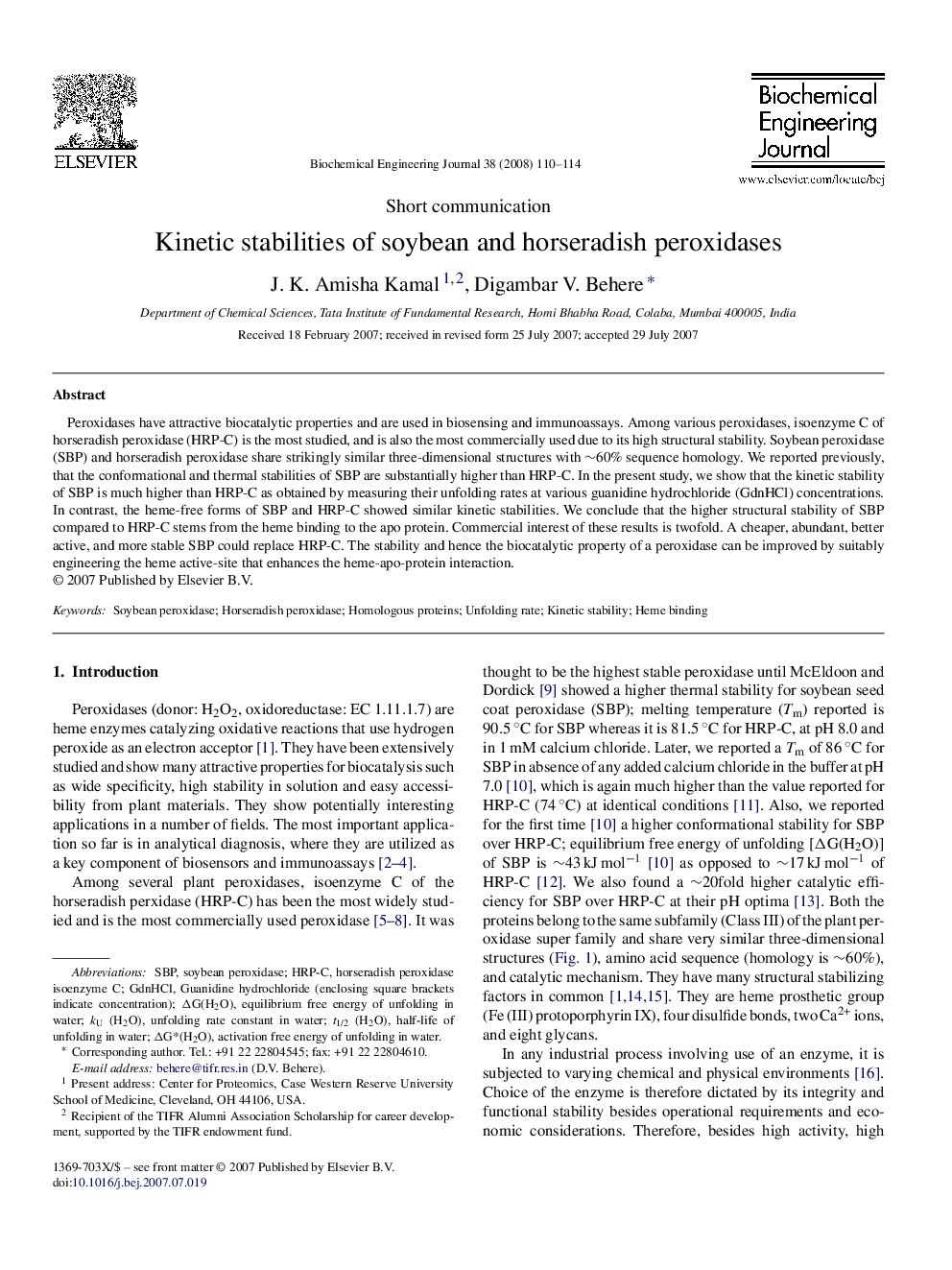| Article ID | Journal | Published Year | Pages | File Type |
|---|---|---|---|---|
| 4748 | Biochemical Engineering Journal | 2008 | 5 Pages |
Peroxidases have attractive biocatalytic properties and are used in biosensing and immunoassays. Among various peroxidases, isoenzyme C of horseradish peroxidase (HRP-C) is the most studied, and is also the most commercially used due to its high structural stability. Soybean peroxidase (SBP) and horseradish peroxidase share strikingly similar three-dimensional structures with ∼60% sequence homology. We reported previously, that the conformational and thermal stabilities of SBP are substantially higher than HRP-C. In the present study, we show that the kinetic stability of SBP is much higher than HRP-C as obtained by measuring their unfolding rates at various guanidine hydrochloride (GdnHCl) concentrations. In contrast, the heme-free forms of SBP and HRP-C showed similar kinetic stabilities. We conclude that the higher structural stability of SBP compared to HRP-C stems from the heme binding to the apo protein. Commercial interest of these results is twofold. A cheaper, abundant, better active, and more stable SBP could replace HRP-C. The stability and hence the biocatalytic property of a peroxidase can be improved by suitably engineering the heme active-site that enhances the heme-apo-protein interaction.
